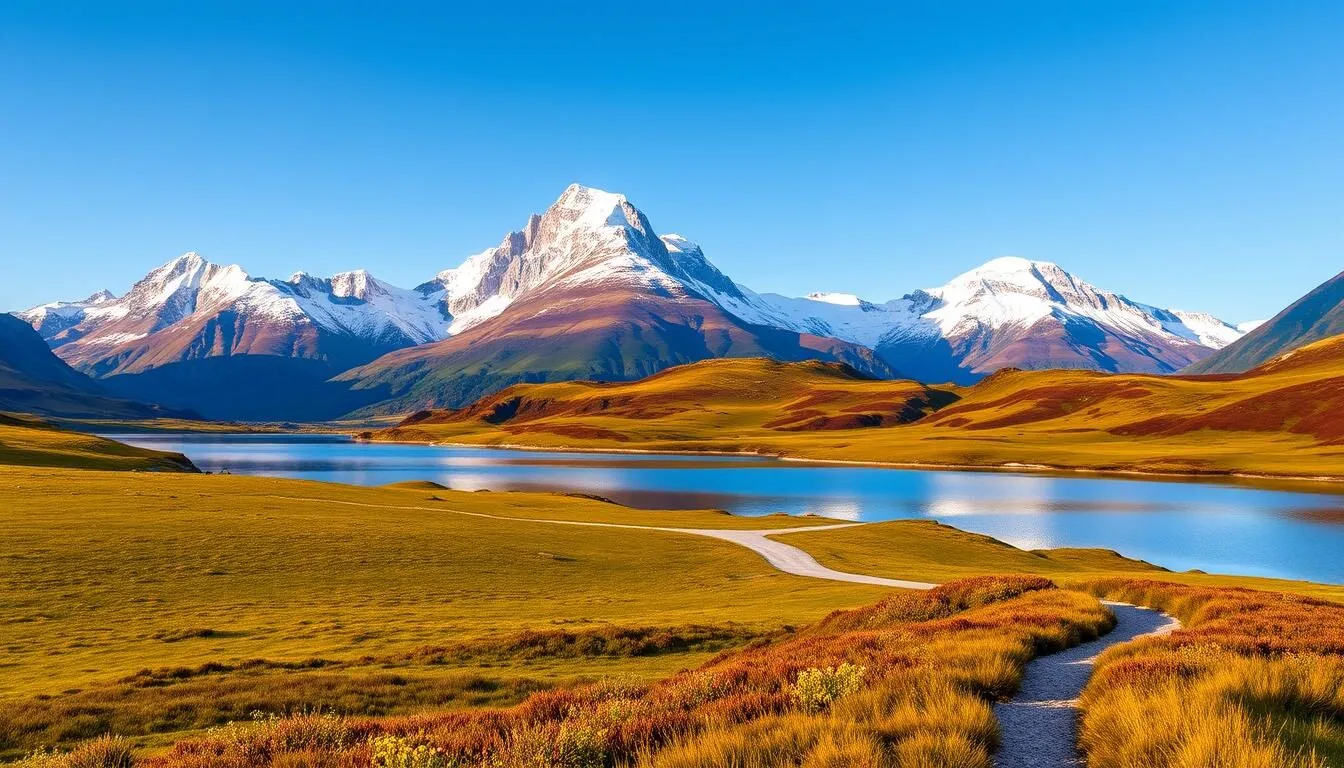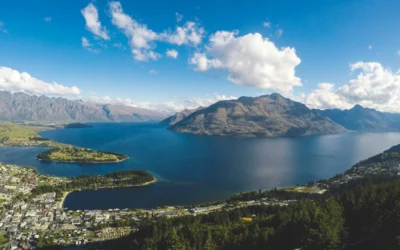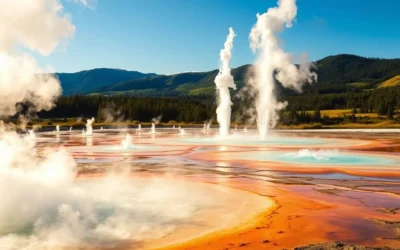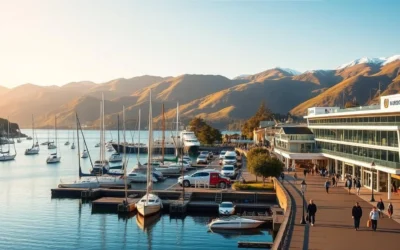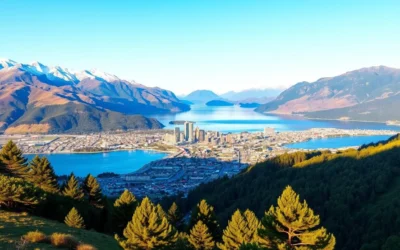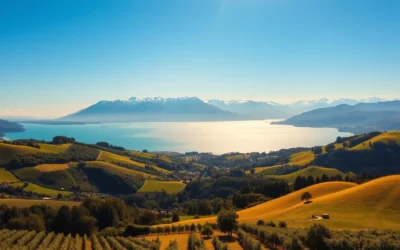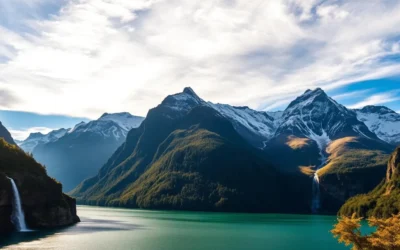✓ Accommodations ✓ Flights ✓ Rental Cars ✓ Tours & Activities
You are about to explore one of New Zealand’s most breathtaking destinations. Aoraki / Mount Cook, standing tall at 3,724 meters, is not only the country’s highest peak but also a hub for nature lovers and adventure seekers.
Covering 722 square kilometers, with 40% of the area glaciated, this UNESCO World Heritage Site offers a diverse range of experiences. From leisurely walks to challenging hikes, and from helicopter flights to stargazing, Mount Cook has something for every kind of traveler visiting South Island.
As you plan your trip, you’ll find that this park is a paradise with its stunning alpine landscapes and varied activities, making it a must-visit destination in New Zealand.
Discovering Aoraki Mount Cook National Park
Aoraki Mount Cook National Park, with its breathtaking landscapes and diverse wildlife, is a must-visit destination in New Zealand. Located in the heart of the South Island, this park is part of the UNESCO World Heritage-listed Te Wahipounamu area.
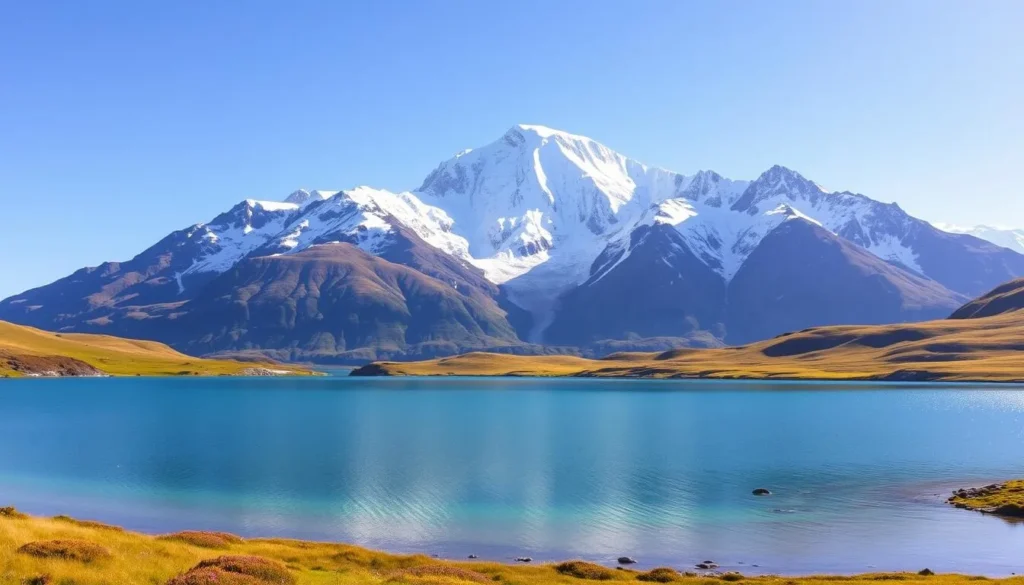
The park is named after Aoraki/Mount Cook, New Zealand’s tallest mountain standing at an impressive 3,724 meters above sea level. The dual name reflects both the mountain’s Māori heritage and European naming, honoring the cultural significance it holds for both peoples.
The park is home to 19 peaks over 3,000 meters, making it a crucial part of the Southern Alps mountain range. Mount Cook National Park covers over 700 square kilometers of stunning alpine terrain, with glaciers covering approximately 40% of the park area.
The area experiences a variable alpine climate with distinct seasons, offering unique experiences for visitors. From snow-capped winter landscapes to vibrant summer alpine meadows, the park’s ecosystem supports unique alpine flora and fauna, including the world’s only alpine parrot, the kea.
Ngāi Tahu, a Māori tribe on the South Island, considers Aoraki a sacred mountain. The English name, Mount Cook, was given to honor Captain James Cook. In 1998, the name was officially changed to Aoraki / Mount Cook, reflecting its cultural significance.
The Scenic Drive to Mount Cook National Park
As you make your way to Mount Cook National Park, the picturesque landscape unfolds, revealing the beauty of Lake Pukaki and beyond. The journey is considered one of the most scenic drives on New Zealand’s South Island, with the road following the stunning turquoise waters of Lake Pukaki.
The drive along State Highway 80, also known as Mount Cook Road, stretches approximately 56 kilometers from the main highway to Mount Cook Village. This road offers increasingly spectacular views of the mountains as you approach your destination. One of the highlights of this drive is Peter’s Lookout, a must-stop viewpoint where you can capture the iconic shot of Mount Cook framed by the winding road and the brilliant blue waters.
| Drive Details | Information |
|---|---|
| Distance | Approximately 56 kilometers |
| Duration | Around 45 minutes to an hour with stops |
| Best Time | Early morning or late afternoon for best lighting |
Allowing at least an hour for the trip is advisable if you plan to make stops for photos. The distinctive blue color of Lake Pukaki comes from fine rock particles suspended in the water, creating a striking contrast against the snow-capped mountains, including Mount Cook. The view from Peter’s Lookout is particularly breathtaking, making it a highlight of your trip to Mount Cook National Park.
Hiking the Hooker Valley Track – A Must-Do Experience
The Hooker Valley Track is a must-do hike in Mount Cook National Park, offering breathtaking views. This 10-kilometer return journey takes approximately three to four hours to complete, making it an ideal day hike for visitors.
The track is considered one of the best day hikes in New Zealand, with a well-maintained gravel path and boardwalks that make it accessible for most fitness levels. As you hike, you’ll cross three scenic suspension bridges over the Hooker River, each offering unique vantage points of the surrounding alpine landscape and rushing glacial waters.
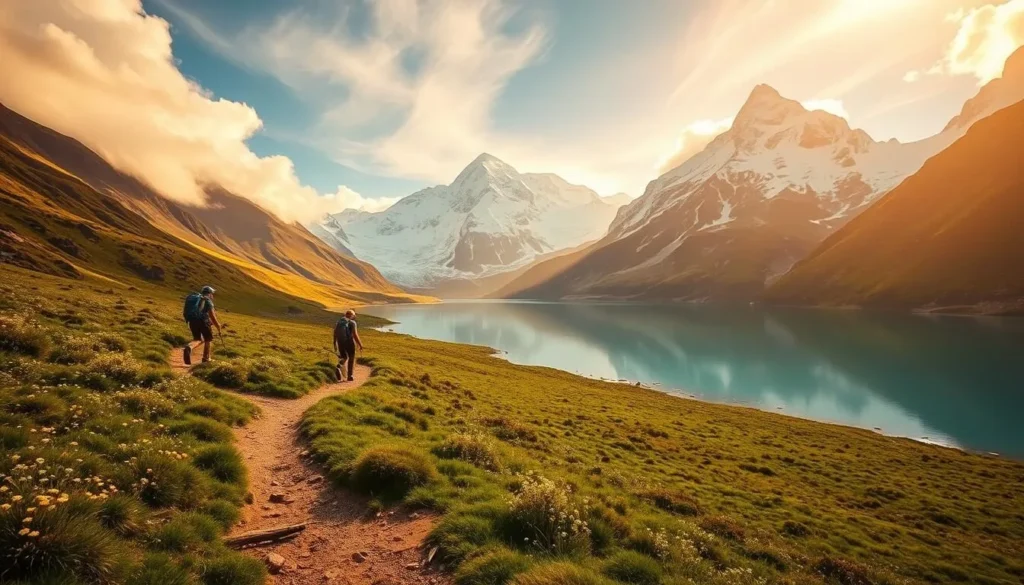
Throughout the hike, you’ll be treated to unobstructed views of Mount Cook, with the mountain growing more impressive as you approach the trail’s end at Hooker Lake. The lake, with its floating icebergs and backdrop of Mount Cook, provides a perfect finale to the hike and a great spot for photography or a picnic.
For the best experience, consider hiking early in the morning when the trail is less crowded and the lighting is ideal for photography. Note that starting April 2025, the trail will be partially closed for construction, with full reopening expected by autumn 2026.
- The Hooker Valley Track is widely regarded as one of the most spectacular hikes in the park.
- The hike is suitable for most fitness levels due to its flat and well-maintained path.
- The scenic suspension bridges offer stunning views of the Hooker River and surrounding landscape.
Exploring the Tasman Glacier and Lake
The Tasman Glacier, New Zealand’s largest glacier, offers a unique and unforgettable experience for visitors to Mount Cook National Park. Measuring an impressive 27 kilometers long and over 4 kilometers wide, it is a significant natural attraction.
Viewing the Tasman Glacier can be done via the Tasman Glacier View Track, a short 1.15 km return walk that takes approximately 30 minutes to complete. From the viewpoint, you can observe the glacier’s terminal face and the icebergs that regularly calve off into Tasman Lake, creating a constantly changing landscape.
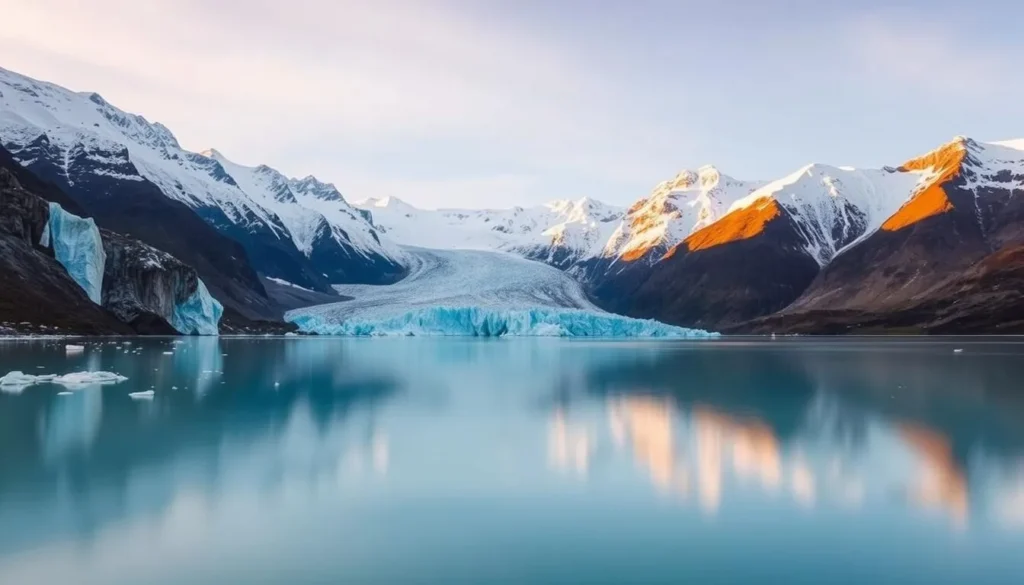
For a closer experience with the Tasman Glacier, boat tours operate on Tasman Lake, allowing visitors to navigate among the floating icebergs and get a better perspective of the glacier’s scale. The glacier has been retreating rapidly due to climate change, with the lake forming only in the 1970s and growing larger each year, making each visit a unique moment in the glacier’s history.
Early morning visits to Tasman Lake often provide the best conditions for photography, with calm waters creating perfect reflections of Mount Cook and surrounding peaks. Additionally, the Blue Lakes, once fed directly by the glacier, offer a pleasant side trip from the main viewpoint, although they now appear more green than blue due to their disconnection from the glacier.
As you explore the Tasman Glacier and Lake, you are witnessing a dynamic and evolving natural wonder. The area offers a network of trails that lead to views of Tasman Lake, the Tasman Glacier, and the Blue Lakes, making it a must-visit destination for anyone traveling to Mount Cook National Park.
Scenic Helicopter Flights Over Mount Cook National Park
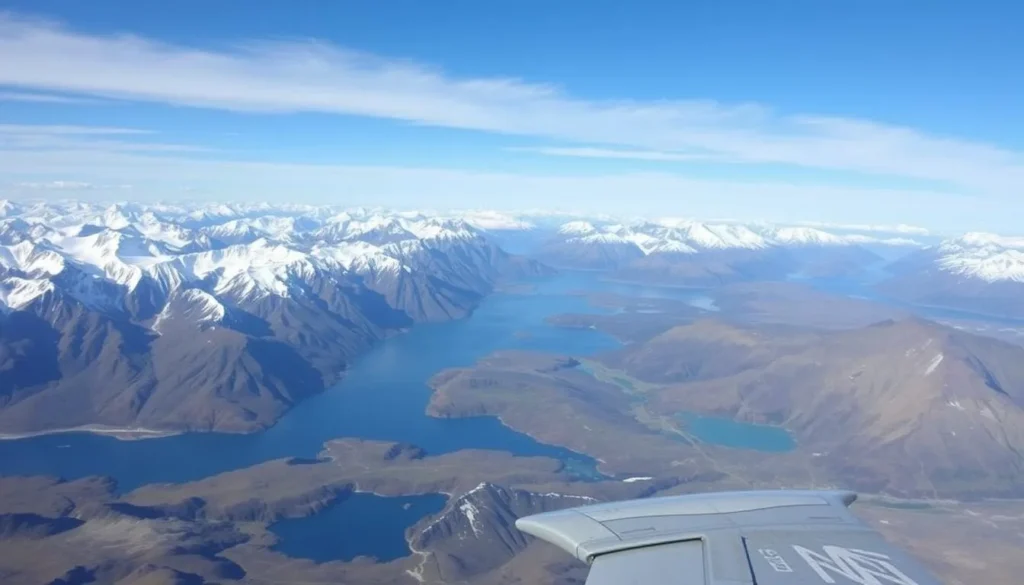
For a truly unforgettable experience, consider a helicopter flight over Mount Cook National Park, offering unparalleled views of New Zealand’s highest peaks and massive glaciers. Taking a scenic helicopter flight over the park provides a unique perspective that simply can’t be experienced from the ground.
Helicopter tours range from 20 minutes to 50 minutes, with prices varying accordingly, starting from around $337 NZD for the shortest options to $780 NZD for comprehensive tours. Most helicopter flight tours include an alpine landing, allowing you to step out onto a glacier or mountain ridge for a truly immersive experience in the heart of the Southern Alps.
From the air, you’ll witness the full scale of the Tasman Glacier, New Zealand’s longest glacier, as well as panoramic views of Mount Cook and surrounding peaks that reach over 3,000 meters. Many operators offer specialized experiences beyond basic sightseeing, including heli-hiking, heli-skiing (in winter), and glacier landings where you can explore the ice with a guide.
While helicopter flights represent one of the more expensive activities in Mount Cook National Park, most visitors consider them a once-in-a-lifetime experience that justifies the cost. Weather conditions can affect flight schedules, so it’s advisable to book your helicopter tour early in your stay to allow for possible rescheduling if needed.
Challenging Hikes: Mueller Hut and Sealy Tarns
Mount Cook National Park is home to some of New Zealand’s most challenging and rewarding hikes, including the Mueller Hut and Sealy Tarns tracks. If you’re an experienced hiker looking for a challenge, these trails offer breathtaking views and unforgettable experiences.
The Mueller Hut is an alpine backcountry hut located at an elevation of over 1,800 meters above sea level. The hike to the Mueller Hut starts from the White Horse Hill Campground and involves a strenuous 10.4 km return journey with 1,042 meters of elevation gain, typically taking 6-8 hours to complete.
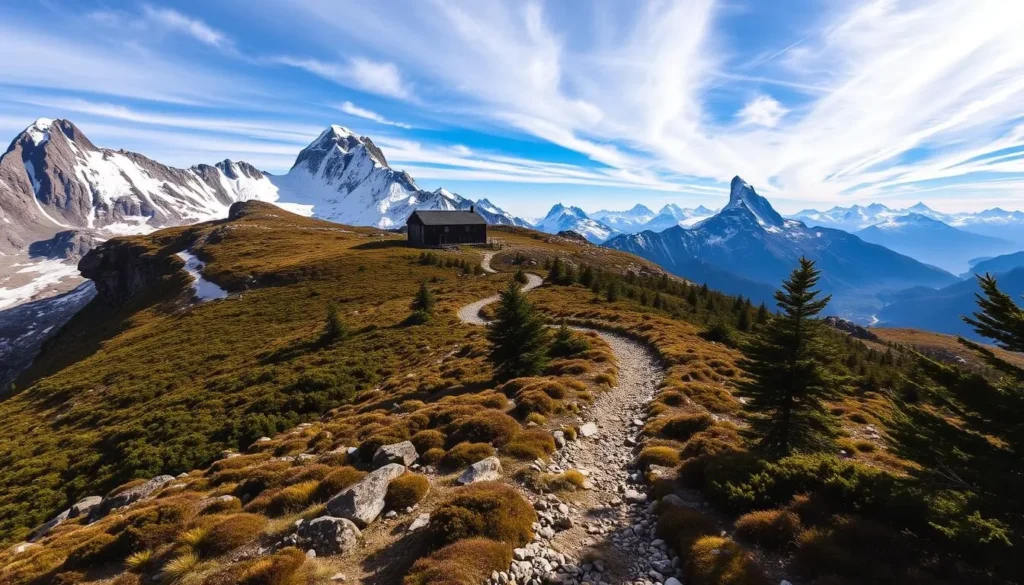
The Sealy Tarns Track, which forms the first half of the Mueller Hut Route, is a challenging but more accessible option. This hike involves climbing over 2,200 stairs and 650 meters in elevation to reach the Sealy Tarn, an alpine lake with spectacular views of the Hooker Valley and Mount Cook.
When hiking in Mount Cook National Park, it’s essential to be prepared, especially during winter (June-September) when both trails become technical alpine routes requiring crampons, ice axes, and mountaineering experience. In summer, start early to avoid the heat, and carry plenty of water as there are no reliable sources along the way.
Whether you’re hiking to the Mueller Hut or Sealy Tarns, you’ll be rewarded with panoramic views of the surrounding mountains and glaciers. With proper preparation and experience, these challenging hikes offer an unforgettable experience in Mount Cook National Park.
Stargazing in the Aoraki Mackenzie Dark Sky Reserve
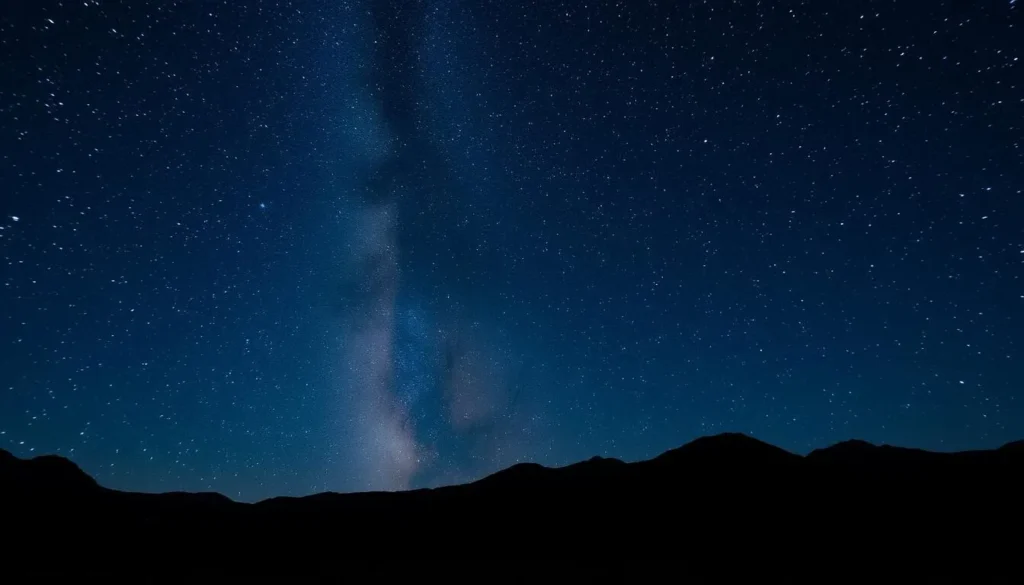
Imagine gazing up at a night sky filled with thousands of stars – welcome to the Aoraki Mackenzie Dark Sky Reserve. As part of this incredible reserve, Mount Cook National Park offers exceptional stargazing opportunities due to its incredibly low light pollution. The reserve spans an impressive 4,300 square kilometers, making it the world’s largest Dark Sky Reserve and the only one in the Southern Hemisphere.
The Aoraki Mackenzie International Dark Sky Reserve is renowned for its dark sky reserve designation, which ensures strict controls on light pollution, creating ideal conditions for stargazing and astronomical observation. Visitors to Aoraki Mount Cook National Park can experience some of the clearest, most spectacular night skies on Earth.
- The Aoraki Mackenzie International Dark Sky Reserve is the world’s largest dark sky reserve and the only one in the Southern Hemisphere, covering 4,300 square kilometers of protected night sky.
- This special designation means the area has strict controls on light pollution, creating ideal conditions for stargazing and astronomical observation.
- Visitors to Mount Cook National Park can experience some of the clearest, most spectacular night skies on Earth, with visibility of celestial features rarely seen in populated areas.
- The Southern Hemisphere location offers unique astronomical viewing opportunities, including the Southern Cross, the Magellanic Clouds, and the center of the Milky Way.
- Organized stargazing tours are available through Big Sky Stargazing, providing transportation to optimal viewing locations.
- For independent stargazers, good viewing locations include the White Horse Hill Campground or the Tasman Glacier parking lot.
- The best stargazing conditions typically occur on clear, moonless nights.
Whether you’re an avid astronomer or simply someone who appreciates the beauty of the night sky, the Aoraki Mackenzie Dark Sky Reserve is a must-visit area. With its minimal light pollution, it offers an unparalleled stargazing experience in the Aoraki Mount Cook region.
Mount Cook National Park: Best Things to Do for Adrenaline Seekers
For thrill-seekers, Mount Cook National Park is a paradise offering a range of adrenaline-pumping activities. If you’re looking for an unforgettable experience, consider climbing Aoraki / Mount Cook, the highest peak in New Zealand. Guided climbing expeditions typically take 6 days and require a high level of fitness to climb the 3,700 meters to the peak.
Adrenaline Activities in Mount Cook National Park
- Skydiving over Mount Cook provides an unmatched rush with panoramic views of New Zealand’s highest mountains, glaciers, and the turquoise waters of Lake Pukaki from heights of up to 15,000 feet.
- Heli-skiing is available during winter months (July to September), offering access to pristine backcountry snow conditions and long descents on the Tasman Glacier.
- Glacier hiking tours combine helicopter access with guided exploration of the Tasman Glacier’s ice formations, crevasses, and ice caves.
- Ice climbing opportunities range from beginner to advanced levels, with professional guides teaching techniques for ascending frozen waterfalls and glacier features.
| Activity | Duration | Level of Difficulty |
|---|---|---|
| Climbing Aoraki / Mount Cook | 6 days | Advanced |
| Skydiving over Mount Cook | 1-2 hours | Beginner |
| Heli-skiing | Full day | Intermediate to Advanced |
| Glacier Hiking Tours | Half day to Full day | Intermediate |
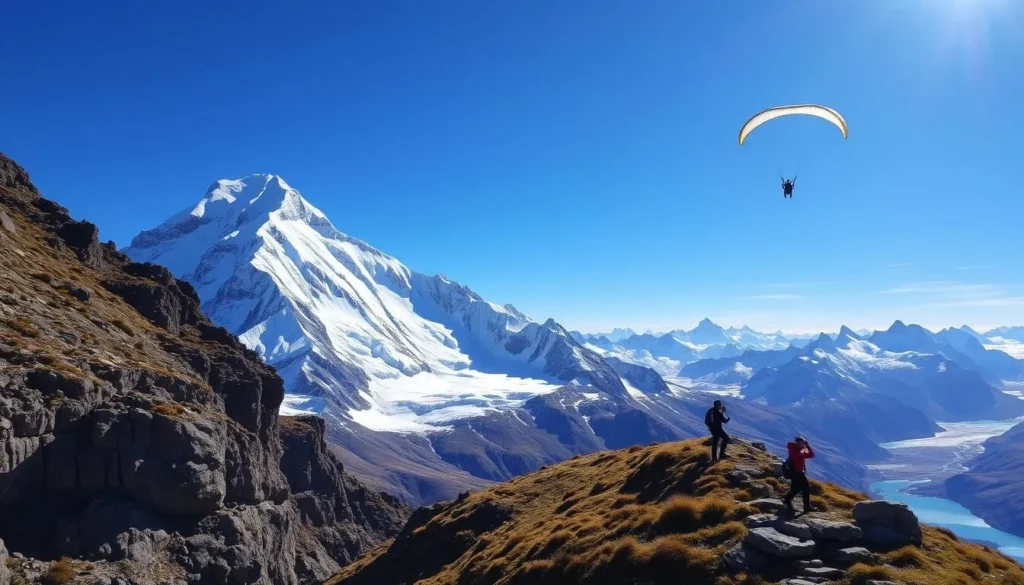
These adrenaline activities typically require advance booking, good physical fitness, and come with higher price points, but deliver once-in-a-lifetime experiences in one of the world’s most spectacular mountain environments.
Short Walks and Easy Activities in Mount Cook
You don’t have to be an avid hiker to enjoy the beauty of Mount Cook National Park. There are several short walks and easy activities that are perfect for families, those with limited time, or visitors preferring less strenuous options.
The Kea Point Track is an easy 1-hour return walk from White Horse Hill Campground that rewards hikers with stunning views of Mount Sefton, Mueller Glacier lake, and Mount Cook. Another option is the Governors Bush Walk, a gentle 1-hour loop through native silver beech forest that starts near Mount Cook Village.
- The Blue Lakes and Tasman Glacier View walks are short, easy tracks that can be combined for a pleasant 1-2 hour excursion.
- The Red Tarns Track, while steeper, is still manageable for most visitors in about 2 hours return.
- For those not wanting to hike at all, simply enjoying the views from various lookout points along the main road is a worthwhile experience.
| Track/Activity | Duration | Description |
|---|---|---|
| Kea Point Track | 1 hour return | Easy walk with stunning views of Mount Sefton and Mount Cook |
| Governors Bush Walk | 1 hour loop | Gentle walk through native silver beech forest near Mount Cook Village |
| Red Tarns Track | 2 hours return | Steeper track with excellent views over Mount Cook Village and Hooker Valley |
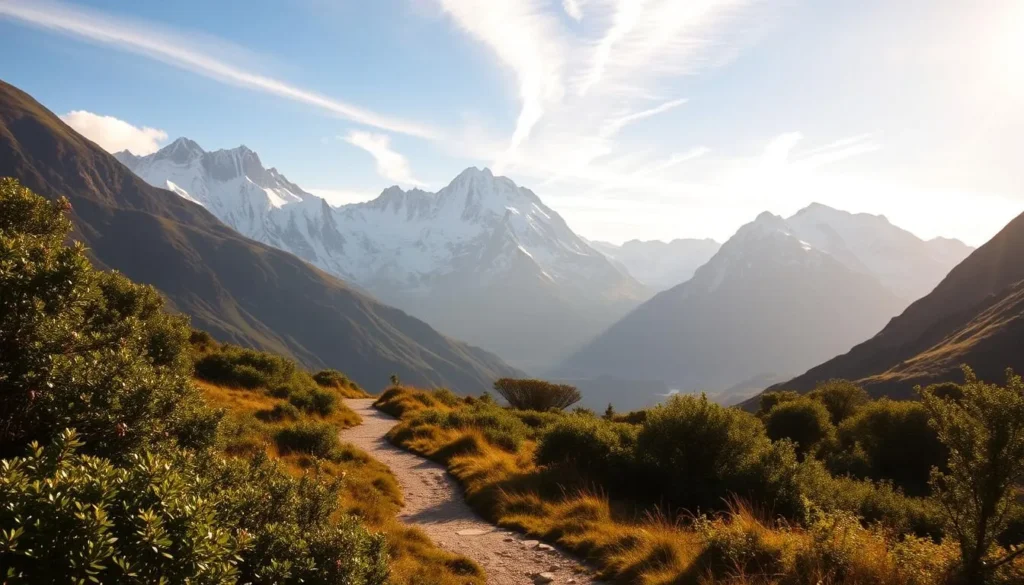
These shorter activities can be easily combined to create a full day of exploration without the commitment of longer hikes, making them ideal for day visitors to the area.
Where to Stay in Mount Cook National Park
Mount Cook Village is the heart of the national park, offering a range of accommodations to suit different needs. You can choose from luxury hotels to budget-friendly options, ensuring that your stay is comfortable and convenient.
The iconic Hermitage Hotel is a premier choice, offering rooms with breathtaking views of Aoraki / Mount Cook. For a more self-contained experience, the Aoraki Mount Cook Alpine Lodge provides apartment-style accommodations with spectacular mountain views.
For budget travelers, the White Horse Hill Campground operated by the Department of Conservation (DOC) is an affordable option at $15 NZD per person per night. It’s essential to book your accommodation in advance, especially during peak season from December to February.
| Accommodation Type | Location | Price Range |
|---|---|---|
| Luxury Hotel | Mount Cook Village | Premium |
| Self-contained Apartments | Aoraki Mount Cook Alpine Lodge | Moderate |
| Campground | White Horse Hill | $15 NZD per person per night |
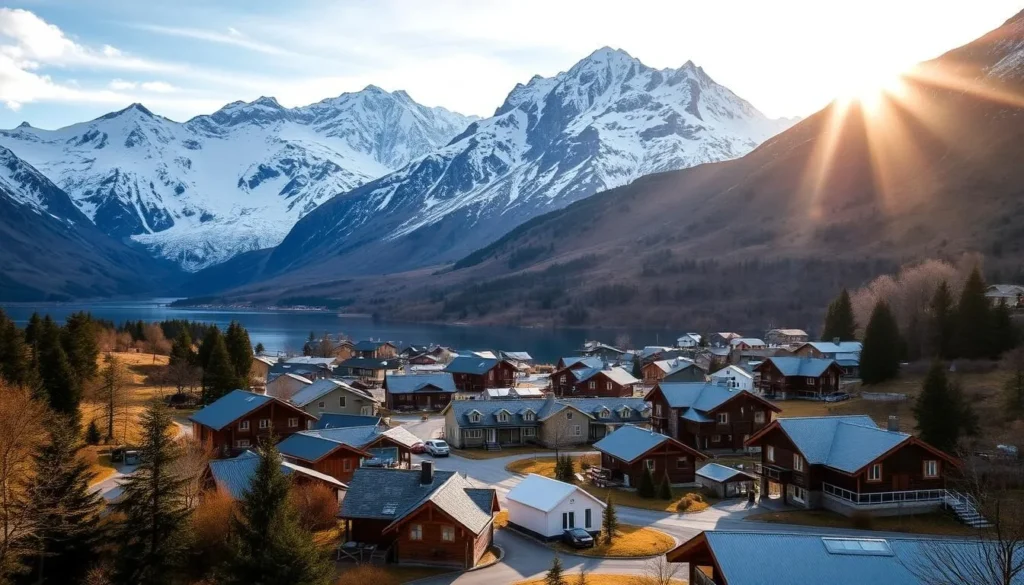
Staying in Mount Cook Village allows you to experience the beauty of the national park at your own pace. Whether you’re looking for adventure or relaxation, the village is the perfect base for your activities.
Dining with a View: Food Options in Mount Cook
Dining in Mount Cook National Park is not just about the food; it’s an immersive experience that lets you savor the beauty of the surroundings. The Hermitage Hotel stands out as a culinary highlight, boasting two exceptional dining venues that offer breathtaking views of Mount Cook.
At the Alpine Restaurant, you can enjoy buffet-style dining for breakfast, lunch, and dinner, with floor-to-ceiling windows providing spectacular views of the surrounding mountains. For a more upscale experience, The Panorama Room serves à la carte dinner with optional wine pairings, featuring local New Zealand cuisine against the backdrop of alpine views.
Beyond The Hermitage Hotel, Mount Cook Village offers additional dining options. The Old Mountaineers’ Café, Bar and Restaurant provides hearty meals and craft beers, with outdoor seating available to enjoy the mountain views. Chamois Bar & Grill is another popular spot, serving pub-style food and local beers in a relaxed atmosphere.
For those who prefer self-catering, the small general store in Cook Village stocks basic supplies. Many visitors also enjoy packing picnic lunches to enjoy at scenic spots throughout the park, taking advantage of the natural beauty while dining outdoors during day hikes.
Conclusion: Planning Your Perfect Visit to Mount Cook National Park
The beauty of Aoraki Mount Cook National Park is accessible year-round, but the experience varies with the seasons. When planning your visit to this stunning New Zealand destination on the South Island, timing is crucial.
The best time to visit Mount Cook National Park depends on your preferences. The shoulder seasons of late spring (October-November) and early autumn (March-April) offer relatively stable weather and fewer crowds, making them ideal for most travelers.
If you’re looking for warmer temperatures and don’t mind the crowds, summer (December-February) is perfect for hiking. However, be prepared for potential afternoon thunderstorms. In contrast, winter (June-August) brings snow-covered landscapes and crisp days, but requires proper clothing and possibly specialized gear for some activities.
To fully experience Cook National Park, plan to stay for at least two days. This allows time for a longer hike and buffer days in case of poor weather. For photography enthusiasts, capturing both sunrise and sunset is a must, as the mountains are often bathed in golden light.
Consider combining your visit to Aoraki Mount Cook with other South Island highlights like Lake Tekapo or Queenstown for a comprehensive New Zealand alpine experience. Whatever time you choose to visit, Mount Cook National Park remains one of New Zealand’s most spectacular natural treasures.
The above is subject to change.
Check back often to TRAVEL.COM for the latest travel tips and deals.
